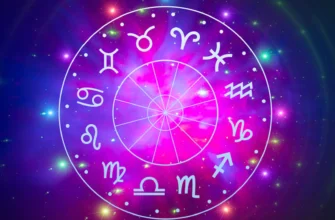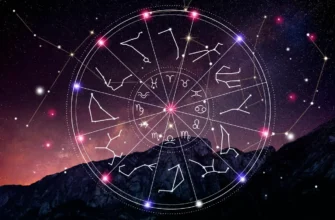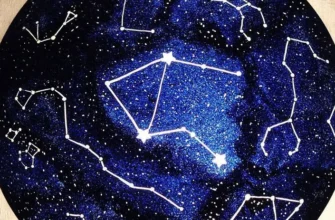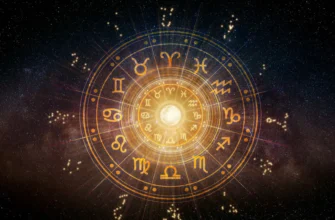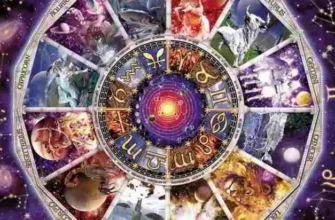Uranus trine Uranus in synastry represents one of astrology interpretation’s genuine gifts – natural harmony across generations that creates effortless understanding, comfortable energy exchange, and mutual respect for independence and unconventional choices. When two people’s Uranus placements trine, they bridge the twenty-eight-year gap with remarkable ease, each appreciating the other’s approach to change, freedom, and innovation despite living through different historical contexts and expressing rebellion through different cultural forms.
These relationships feel like coming home – both people experience the rare pleasure of being genuinely understood around their need for independence, their relationship to change, and their progressive values. Neither person must constantly explain themselves, defend their choices, or fight for the freedom they need. The harmony isn’t perfect – no aspect creates perfection – but it provides foundation for relationships that energize rather than drain, inspire rather than frustrate, and support growth rather than demanding conformity.
For those exploring their Synastry online connections and seeking to understand why certain relationships feel surprisingly easy while others prove inexplicably difficult, Uranus aspects provide crucial insight. The trine explains natural affinity that transcends personality differences and creates lasting bonds. It appears in the most successful mentor-student relationships, the most harmonious parent-child dynamics, the most innovative professional collaborations, and the most mutually-liberating romantic partnerships across age differences.
Understanding and appreciating Uranus trine Uranus helps us recognize and honor these special connections when we find them, knowing that such harmony is not universal and should never be taken for granted. It also helps us accept with less judgment and self-blame those relationships where Uranus squares or opposes, recognizing that some friction stems from forces beyond personal control rather than failures of character or effort. Both types of relationships have their place – the trines gift us with ease and understanding, while the squares and oppositions challenge us to grow beyond comfortable harmony into the more difficult work of bridging genuine differences and transcending energetic incompatibility through consciousness and commitment.
- The Twenty-Eight Year Bridge: Understanding Uranus Cycles
- Contrasting Harmonious and Challenging Uranus Aspects
- Teacher-Student Dynamics and Educational Settings
- Romantic Relationships and Age-Gap Partnerships
- Professional Collaboration and Creative Partnerships
- The Shadow Side: When Harmony Enables Problematic Patterns
- Practical Applications: Working Consciously With Uranus Trines
- Accepting Fate: When Relationships Can’t Be Forced
The Twenty-Eight Year Bridge: Understanding Uranus Cycles
Uranus takes approximately eighty-four years to complete one full journey through the zodiac, spending about seven years in each sign. This slow movement creates distinct generational signatures – groups of people born during the same seven-year Uranus period share similar approaches to rebellion, innovation, and freedom-seeking. The trine aspect occurs when Uranus has moved roughly one-third of its cycle forward, landing in a sign that shares the same element (fire, earth, air, or water) as the original position.
When examining a Free Synastry Chart between people born twenty-eight years apart, their Uranus placements naturally harmonize through elemental compatibility. Someone born with Uranus in Aries (fire) will have their Uranus trine another person’s Uranus in Leo or Sagittarius (also fire signs). Someone with Uranus in Taurus (earth) trines Uranus in Virgo or Capricorn (earth signs). This elemental harmony creates instinctive understanding around how both people approach change, handle disruption, and express their need for freedom and independence.
The twenty-eight-year gap represents a sweet spot in generational relationships – old enough for significant life experience differential, creating natural mentor-student or parent-child dynamics, yet close enough that both generations share certain cultural references, technological frameworks, and social movements that create common ground. The younger person remembers the older person’s era, or at least encounters it in recent memory, while the older person remains current enough to understand the younger person’s world without the complete disconnect that occurs across wider age spans.
This timing explains why certain parent-child relationships flow with remarkable ease while others struggle with constant friction. Parents who have children around age twenty-eight create natural Uranus trines with their offspring. These parent-child pairs often experience unusual harmony – the child respects the parent’s wisdom while feeling genuinely understood, and the parent appreciates the child’s independence while feeling comfortable with their progressive choices. Even when personalities differ significantly, the underlying energy field feels harmonious and comfortable rather than tense and exhausting.
One example involves a mother and son separated by approximately twenty-eight years, their Uranus placements forming a perfect trine. Despite very different personalities – the mother more social and emotional, the son more intellectual and reserved – they maintained an exceptionally close relationship from his childhood onward. Neither struggled to understand the other’s need for independence, both respected each other’s unconventional choices, and both felt energetically comfortable in each other’s presence regardless of how much time passed between visits.
Contrasting Harmonious and Challenging Uranus Aspects
Understanding Uranus trine Uranus requires contrasting it with challenging Uranus aspects – the square (90 degrees, occurring with approximately twenty-one-year age differences) and the opposition (180 degrees, occurring with approximately forty-two-year age differences). These challenging aspects create generational friction, misunderstanding, and exhausting tension that persists regardless of conscious goodwill or mutual affection.
When Uranus forms an opposition between two people, as occurs between parents and children born when the parent is around forty-two years old, fundamental incompatibility emerges around themes of freedom, change, and breaking conventions. What one generation considers necessary rebellion, the other views as pointless disruption. What one sees as healthy independence, the other perceives as selfish rejection. The tension feels constant and unresolvable, creating relationships where both people perpetually misunderstand each other’s motivations despite genuine care.
Two siblings born several years apart might both oppose their mother’s Uranus, but with varying degrees of severity depending on the exactness of the aspect. The sibling whose Uranus more precisely opposes the mother’s experiences particularly tense relationships – difficulty establishing close bonds, perpetual misunderstanding, and inability to feel comfortable together regardless of effort invested. This isn’t about personality conflicts or communication failures – it’s about fundamental energetic incompatibility at the level of how each person relates to freedom, change, and independence.
This astrological reality explains seemingly inexplicable relationship patterns. Consider children with developmental disabilities who struggle to establish good relationships with their mothers. Beyond the practical challenges of communication and care, Uranus aspects might reveal why some mother-child pairs manage these challenges better than others. When Uranus opposes between mother and child, the energetic friction compounds existing difficulties, making mutual understanding and comfortable bonding nearly impossible regardless of how much love exists or how hard both parties try.
In compatibility zodiac analysis, these patterns demonstrate that not all relationships can be improved through effort, therapy, or goodwill – some relationships carry inherent energetic incompatibilities that conscious intention cannot fully overcome. This represents difficult wisdom that contradicts cultural narratives about family bonds and the power of love to conquer all obstacles. Sometimes the most loving choice involves accepting incompatibility rather than endlessly struggling to force harmony where energetic conditions don’t support it.
Teacher-Student Dynamics and Educational Settings
Uranus aspects profoundly influence teacher-student relationships and educational environments. Teachers inevitably encounter students whose Uranus forms various aspects to their own, creating wildly different experiences with different students despite using identical teaching methods and investing equal effort. The teacher might feel instantly connected to certain students, experiencing effortless rapport and mutual respect, while finding other students incomprehensible, frustrating, or impossible to reach – and Uranus aspects often explain these variations.
Elementary school teachers around age twenty-six begin encountering students whose Uranus opposes their own, creating what feels like a generational chasm despite the relatively small age difference. University professors around age forty teach undergraduates whose Uranus opposes theirs, similarly experiencing pronounced generational friction. These teachers clearly feel out of sync with specific students while maintaining close, productive relationships with others. The difference lies not in teaching quality or student capability, but in underlying Uranus compatibility or incompatibility.
Uranus represents generational differences in their purest form – shifts in how people relate to authority, embrace change, define freedom, and break from tradition. Teachers face entire classrooms containing dozens of students whose Uranus opposes their own, amplifying the sensation of generational disconnect. The teacher’s approach to innovation, discipline, and independence fundamentally conflicts with these students’ orientation, creating friction that both parties experience as exhausting and discouraging.
In contrast, students whose Uranus trines the teacher’s – those born approximately twenty-eight years after the teacher – experience remarkably smooth relationships. These students intuitively understand the teacher’s methods, appreciate their approach to innovation within education, and feel comfortable with the teacher’s balance of structure and freedom. The teacher, meanwhile, finds these students refreshing, insightful, and easy to mentor. Mutual respect flows naturally without requiring conscious effort to establish or maintain.
When consulting a Synastry Chart Calculator for educational placements, mentorship programs, or professional training relationships, Uranus aspects provide valuable information about likely compatibility. Trines suggest natural harmony that facilitates learning and growth. Squares and oppositions indicate relationships requiring extra conscious effort to bridge generational divides and might prove ultimately unsuccessful regardless of effort invested. This knowledge allows more strategic matching of mentors and mentees, teachers and students, to maximize success and minimize frustration for both parties.
Romantic Relationships and Age-Gap Partnerships
Uranus aspects also significantly influence romantic relationships, particularly those involving age differences. When Uranus forms harmonious trines between partners, age gaps feel less relevant – both people experience comfortable energy exchange, mutual respect for independence, and easy acceptance of each other’s unconventional choices. The relationship feels modern, progressive, and free from oppressive expectations or controlling dynamics that plague partnerships with challenging Uranus aspects.
However, when Uranus forms squares or oppositions between romantic partners, the age difference becomes a constant source of friction regardless of attraction, shared values, or emotional compatibility. One relationship example involved partners with a nineteen-year age gap, creating a Uranus square between them. Despite mutual admiration, intellectual compatibility, and genuine affection, they felt inexplicably tense and exhausted whenever together. The energy mismatch created constant low-level friction that eventually eroded the relationship despite both people wanting it to succeed.
The Uranus square (occurring with approximately twenty-one-year age differences) creates particularly challenging romantic dynamics. What one partner considers healthy independence, the other perceives as rejection or abandonment. One person’s exciting spontaneity feels like irresponsible chaos to the other. One person’s necessary boundaries seem like cruel withholding to their partner. These conflicts aren’t really about the specific issues they argue over – they’re expressions of fundamental Uranus incompatibility manifesting through daily life circumstances.
In horoscope compatibility analysis for romantic partnerships, Uranus aspects deserve careful attention, especially when significant age differences exist. The trine creates relationships where both partners support each other’s growth, respect each other’s need for space and independence, and handle unexpected changes with flexibility and mutual support. Squares and oppositions, by contrast, generate relationships where independence feels threatening, changes create destabilizing anxiety, and both people struggle to give each other the freedom they need without feeling abandoned or rejected.
Professional Collaboration and Creative Partnerships
Beyond family and romantic contexts, Uranus trine Uranus appears frequently in successful professional collaborations, creative partnerships, and business relationships spanning different age groups. The younger person brings fresh perspectives, technological fluency, and willingness to experiment without being constrained by “how things have always been done.” The older person provides experience, strategic thinking, and understanding of why certain approaches work while others fail. When their Uranus placements trine, these complementary strengths combine synergistically rather than creating friction.
Innovation-focused industries particularly benefit from Uranus trine partnerships. Technology companies, creative agencies, research institutions, and entrepreneurial ventures thrive when they cultivate collaborations between generations whose Uranus placements harmonize. The older innovator recognizes potential in the younger person’s radical ideas while providing grounding and resources to manifest them. The younger innovator respects the older person’s experience while feeling free to challenge assumptions and propose novel approaches.
These partnerships work because both people share similar relationships to change, rebellion, and breaking conventions despite expressing them through different cultural contexts. The older person’s revolutionary thinking during their youth aligns elementally with the younger person’s current innovations. Both understand intuitively what it means to challenge established systems, embrace the unexpected, and value freedom over security – they simply express these values through different technological and cultural frameworks.
In astrology and horoscope guidance for professional development, identifying potential mentors, collaborators, or business partners whose Uranus trines yours provides strategic advantage. These relationships require less conscious effort to maintain, generate less friction during disagreements, and more easily weather the unexpected changes that challenge all professional partnerships. Both parties feel energized rather than drained by working together, even when facing significant stress or setbacks.
The Shadow Side: When Harmony Enables Problematic Patterns
While Uranus trine Uranus generally creates positive dynamics, harmonious aspects can occasionally enable problematic patterns that challenging aspects would naturally resist. The comfortable energy exchange might allow unhealthy independence to cross into avoidance of commitment, or shared rebellion against convention might prevent necessary engagement with practical reality and social responsibility.
In parent-child relationships, excessive Uranus harmony might create situations where boundaries blur inappropriately. The parent relates to the child more as a peer or friend than as an authority figure providing structure and guidance. The child, feeling completely understood and accepted, might never develop healthy respect for appropriate limits or learn to navigate relationships with people who don’t automatically accommodate their need for freedom and independence.
Similarly, in mentor-student contexts, too much Uranus harmony might prevent the healthy friction that promotes growth. The student never encounters the resistance that builds strength, never learns to work with people whose approaches differ significantly from their own, and develops an unrealistic expectation that all relationships should feel effortlessly compatible. The real world contains far more Uranus squares and oppositions than trines – learning to navigate challenging aspects represents essential life competency.
In romantic partnerships, Uranus trines might create excessive independence where both partners avoid the vulnerability and interdependence that intimate relationships require for depth and longevity. Both people value freedom so highly and feel so comfortable giving each other space that they never develop the deep emotional bonding, shared routines, or committed future-planning that transforms exciting partnerships into lasting life companionship.
Understanding zodiac signs astrology through balanced perspective means recognizing that harmonious aspects, while generally positive, require conscious awareness to maximize benefits while avoiding potential pitfalls. Uranus trine Uranus creates wonderful foundation for mutual respect and comfortable energy exchange, but healthy relationships still require effort, vulnerability, and willingness to occasionally feel uncomfortable rather than always prioritizing freedom and independence over deeper connection.
Practical Applications: Working Consciously With Uranus Trines
For relationships featuring Uranus trine Uranus, several practices help maximize the aspect’s gifts while maintaining healthy balance. First, consciously appreciate and acknowledge the natural harmony – don’t take it for granted. Many people struggle with far more challenging aspects; recognizing your fortune in finding compatible Uranus connections helps maintain gratitude and prevents complacency.
Second, use the comfortable energy as foundation for deeper work rather than excuse to avoid growth. The trine makes it easier to have difficult conversations, navigate changes, and respect differences – leverage this ease to build stronger, more authentic relationships rather than skating along surface-level compatibility without ever risking vulnerability or conflict.
Third, in parent-child relationships with Uranus trines, consciously maintain appropriate generational boundaries despite the peer-like comfort. Parents must still provide structure, enforce limits, and maintain authority even when they deeply understand and appreciate their child’s independence. The harmony creates opportunity for authoritative (rather than authoritarian) parenting that respects the child while still providing necessary guidance.
Fourth, in professional contexts, deliberately seek out some collaborators whose Uranus squares or opposes yours to build capacity for working across generational divides. If all your partnerships feature harmonious Uranus aspects, you’ll lack skills for navigating the inevitable challenging aspects that appear in other essential relationships. Deliberately cultivating some friction builds resilience and adaptability that pure harmony cannot develop.
Fifth, when examining your Free Birth Chart and considering future relationships, use Uranus aspects as one factor among many rather than the sole determining criterion. A Uranus trine creates favorable conditions but doesn’t guarantee relationship success – other factors including personal planets, values, life goals, and emotional compatibility matter equally. Similarly, a Uranus square or opposition doesn’t doom relationships – it simply requires more conscious effort and realistic expectations about where friction will naturally arise.
Accepting Fate: When Relationships Can’t Be Forced
Perhaps Uranus aspects’ most profound lesson involves accepting that not all relationships can be improved through effort, and not all conflicts stem from failures of communication or insufficient love. When two people’s Uranus placements form challenging aspects, particularly oppositions, fundamental energetic incompatibility exists that conscious intention cannot fully overcome. The most compassionate response sometimes involves accepting this reality rather than endlessly struggling against it.
This wisdom proves particularly important in family relationships where social expectations demand closeness regardless of actual compatibility. A mother whose Uranus opposes her daughter’s might spend decades feeling like a failed parent, constantly anxious about their strained relationship, and endlessly attempting to create harmony that the astrological chart indicates is simply not available. Understanding the Uranus opposition doesn’t excuse neglect or justify abandoning relationship entirely – it simply explains why connection feels so difficult and suggests that accepting a more distant, less intimate relationship might actually serve both parties better than forcing inappropriate closeness.
In some cases, alternative caregiving arrangements better serve everyone involved. A child might thrive with grandparents, aunts, uncles, or chosen family whose Uranus trines rather than opposes the child’s, while struggling under the care of biological parents whose Uranus creates constant friction. Society often judges such arrangements harshly, viewing them as parental failure, but astrological wisdom suggests that honoring energetic compatibility sometimes means accepting that blood relationships don’t automatically create optimal caregiving dynamics.
Teachers encountering entire classrooms of students whose Uranus opposes theirs might feel like failures when connection proves impossible with certain students despite their best efforts. Understanding the aspect provides perspective – this isn’t personal failure or inadequate teaching, it’s generational incompatibility operating through dozens of individual relationships simultaneously. The teacher can stop blaming themselves, accept the limitation, and focus energy on students whose Uranus placements allow more productive connections.
In zodiac horoscope wisdom, accepting fate doesn’t mean fatalism or abandoning agency – it means recognizing which factors lie within personal control and which represent larger forces operating through individual lives. We can’t change our Uranus placement or anyone else’s. We can’t transform oppositions into trines through willpower. We can, however, make conscious choices about which relationships to prioritize, which to accept as limited, and which to strategically minimize when energetic incompatibility creates more harm than benefit.


